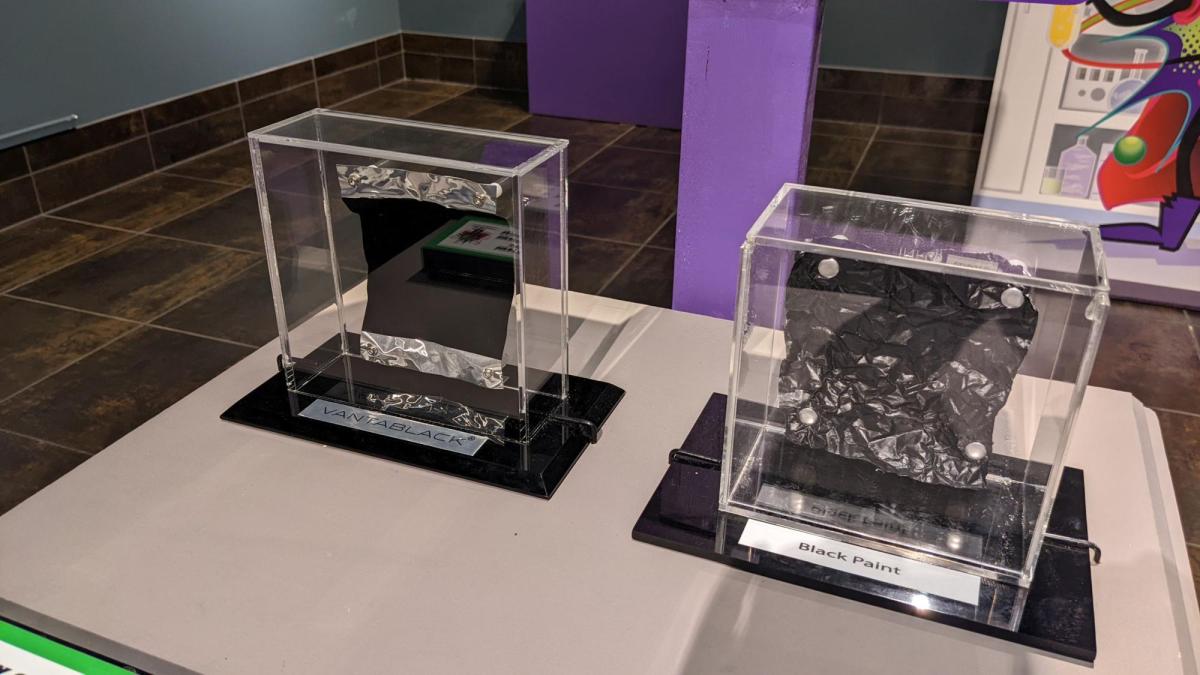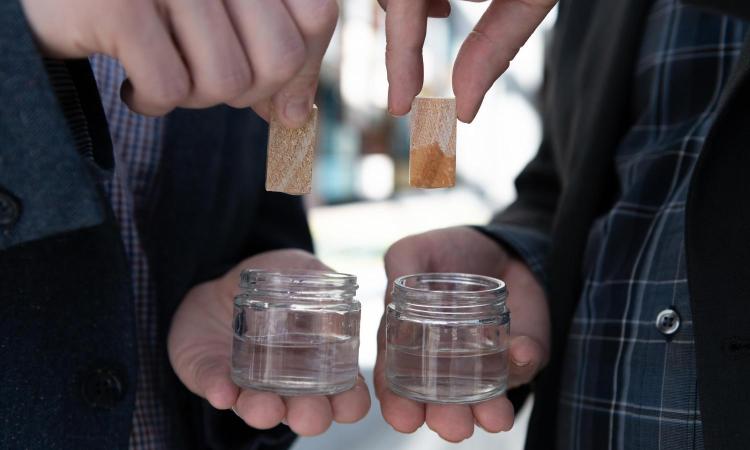MSE’s Mark Losego partners with Tellus Science Museum to teach the public about materials science

A new exhibit about “Superhero Materials” at Cartersville’s Tellus Science Museum received an assist from Georgia Tech’s College of Engineering. Mark Losego, associate professor in the School of Materials Science and Engineering (MSE), worked with the museum’s staff to frame the technical content and design of the exhibit.
The exhibit uses repeatable experiments to teach visitors about major principles in materials science. When curator Rebecca Melsheimer decided to focus on materials for her next project, she reached out to many different resources: the Materials Research Society, and previous exhibit designers, and the Georgia Tech's MSE.
Losego has a long history of materials science community outreach, starting with his time as an undergraduate student. At Georgia Tech, he has built a collection of demonstrations for students and visitors. These demonstrations, which include shape memory alloys and using piezoelectric materials to cause a small explosion, tend to be popular with a wide range of audiences.
“It was exciting to contribute to this exhibit. I do a lot of demos in my MSE classes now, but this was a chance to have thousands of people experience these materials science demos and possibly inspire a new generation of materials engineers” said Losego.

Mark Losego, associate professor in the School of Materials Science and Engineering

The exhibit features a variety of different materials science principles, complete with written explanations and physical representations.
The Exhibit
Superhero Materials is largely interactive, featuring tactile and repeatable experiments that demonstrate materials science principles and display the unique properties of different materials such as shape memory alloys, transparent concrete, and fiber optic fabric.
“The Tellus design team found really creative ways to showcase materials science,” said Losego. “For example, the team designed an apparatus that allows visitors to test out different thermochromic materials by heating them up with their hands to see what temperature initiates their color change. For the piece of thermochromic material that needed the highest temperature to change, the design team had to place foam paneling behind the material instead of the normal wood backing to decrease the thermal conductivity and allow enough heat to be built up for the phase change temperature to be reached.”
The exhibit also has a touchable materials wall, showcasing common materials that visitors are more likely to encounter in their everyday lives.
“With the material touch wall, we wanted to draw the connection between the ordinary stuff we use every day and more unusual materials that we don’t use often, or at least don’t know that we use often,” said Melsheimer, Tellus’ assistant exhibit developer.
Losego also shared his entire asynchronous “Introduction to Materials Science” Canvas course (MSE 2001) with Melsheimer.

One display features the material Vantablack, a coating of carbon tubes that absorbs 99.95% of light
“I was surprised when Rebecca (Melsheimer) told me she actually watched the entire course and took the quizzes! I guess I still need to grade those.”
Mark Losego
In addition to collaborating on big picture design, Melsheimer and Losego worked together on the individual components of the exhibit.
“Mark suggested some great exhibit features, such as highlighting how structural differences determine the way in which a material operates, instead of focusing solely on compositional differences,” Melsheimer said. “He also suggested that we use density cubes with different properties in an exhibit.”
Losego gave the keynote lecture at the exhibit’s grand opening on March 26. “I knew what demonstrations were going to be shown in the exhibits, so I wanted to connect those ideas with other general information about materials that might be interesting to the public,” he said.
The exhibit will be on display until February 26, 2023.

The exhibit includes a material touch wall and a timeline describing when in history different materials were created and used
The Takeaway
Superhero Materials emphasizes the importance of materials in our everyday lives and aims to create more awareness for visitors about what materials they commonly interact with that they may take for granted.
“Materials make up everything around us,” Losego said. “Most people don’t consider how each material must be carefully designed with specific properties to meet the needs of the end products that we use every day.”
“The exhibit highlights the amount of work and engineering that goes into different materials,” Melsheimer said. “Hopefully, we can also get people thinking about what materials can be made in the future and applied to fields like sustainability and alternative energies.”
Related Story

New Process For Preserving Lumber Could Offer Advantages Over Pressure Treating
Mark Losego authors a study that outlines a method that could one day replace conventional pressure treating as a way to make lumber nearly impervious to water.